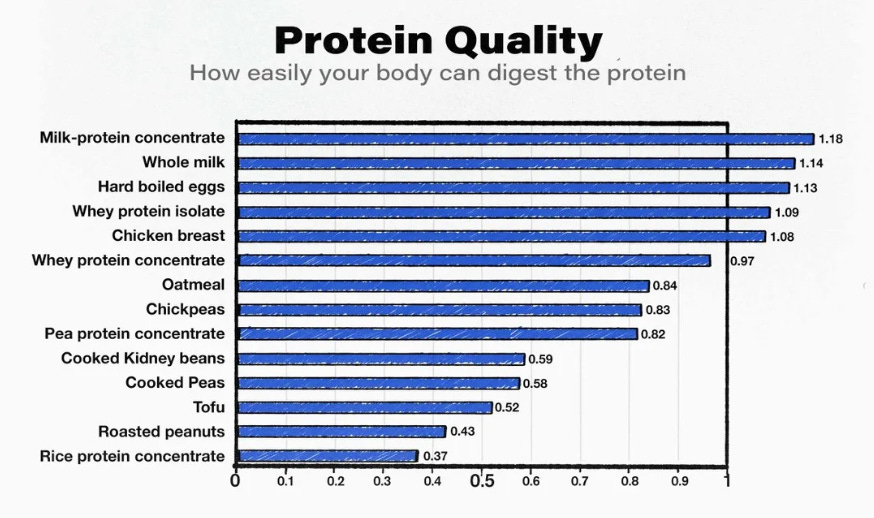· supplements · 15 min read
Does Chewing Gum Help Lose Face Fat? (You’ll Be Shocked)
Looking to slim down your face and achieve a more defined jawline? Chewing gum might just be the secret weapon you've been searching for.
Looking to slim down your face and achieve a more defined jawline? Chewing gum might just be the secret weapon you’ve been searching for. In this article, we’ll explore the connection between chewing gum and face fat loss, along with the potential benefits and risks associated with this practice.
From its impact on facial muscles to tips on incorporating it into your routine effectively, we’ll cover everything you need to know about using chewing gum as a tool for achieving your desired facial aesthetic.
What Is Face Fat?
Face fat refers to the accumulation of excess adipose tissue in the facial region, leading to a fuller or rounder appearance. It can impact facial symmetry and contouring, affecting one’s overall facial appearance.
Several factors can contribute to the development of face fat, including genetics, age, diet, and overall body weight. A person’s metabolism also plays a significant role in how fat is distributed in the face.
While some may naturally have a fuller face due to genetics or age-related changes in skin elasticity and muscle tone, others may find that dietary habits high in processed foods and sugars can contribute to excess fat storage in the face.
The structure of the face itself, such as bone density and distribution of fat cells, can influence the visibility of face fat.
What Causes Face Fat?
Face fat can be influenced by various factors, including genetics, dieting habits, metabolic rate, and the individual’s facial structure. Unhealthy eating patterns and a sedentary lifestyle can contribute to excess fat accumulation in the face.
A diet high in processed foods, sugars, and unhealthy fats can lead to weight gain, including in the facial area. Metabolism plays a crucial role in how the body processes and stores fat, impacting where fat is deposited on the face. Genetic predispositions can also play a significant role in determining a person’s natural facial shape and fat distribution.
Certain lifestyle choices, such as lack of sleep, stress, and lack of hydration, can affect the body’s hormone levels and overall health, potentially influencing facial fat distribution.
Can Chewing Gum Help Lose Face Fat?
Chewing gum is often touted as a potential method to help lose face fat due to its purported effects on facial muscles and calorie burning. Many believe that the repetitive chewing motion can aid in toning the jawline and reducing facial puffiness.
Chewing gum is thought to be a convenient way to engage in facial exercises without requiring a specific workout regimen. Advocates suggest that the continuous movement of the jaw while chewing gum can serve as a subtle form of muscle workout for the face. This could potentially contribute to overall facial slimming by promoting better circulation and muscle definition.
While some studies support the idea that chewing gum may have slight benefits in terms of burning extra calories, its direct impact on targeted face fat reduction remains a topic of debate among experts in the field.
How Does Chewing Gum Affect Facial Muscles?
Chewing gum can engage various facial muscles, such as those in the jaw and cheeks, leading to increased calorie burning in the region. This repetitive motion is believed to contribute to facial toning and firming.
Regular gum chewing has been associated with improved facial muscle strength and endurance. By consistently working these muscles, individuals may notice enhanced definition and tightness in their facial contours.
The continuous contraction and relaxation of the muscles while chewing gum not only help burn calories but also serve as a low-impact workout for the face. This subtle exercise can promote blood flow, which in turn can contribute to a healthier complexion and a more youthful appearance.
Does Chewing Gum Increase Jawline Definition?
There is speculation that chewing gum may assist in enhancing jawline definition by promoting jaw exercises and muscle engagement. This repetitive activity is thought to contribute to facial sculpting and jawline refinement.
By engaging in consistent gum chewing, individuals could potentially notice an increase in jaw muscle strength and definition over time. The continuous motion of chewing gum helps in toning the muscles in the jaw area, which in turn could lead to a more defined and sculpted jawline. The act of chewing gum can also serve as a form of resistance training for the jaw muscles, aiding in their development and potential enhancement of facial features.
What Are The Other Benefits Of Chewing Gum?
Aside from its potential impact on face fat, chewing gum offers additional benefits such as stress reduction, increased saliva production, and improved digestion. Regular gum chewing is often incorporated into beauty regimens for its cosmetic and oral health benefits.
Chewing gum has been found to help in stress relief by providing a simple and enjoyable way to relax the mind and reduce tension. The act of chewing gum stimulates saliva production, which aids in maintaining oral health by neutralizing acids and preventing dry mouth. Chewing gum can assist in digestion by increasing saliva flow, which helps break down food particles in the mouth and kickstart the digestive process, making it a convenient remedy for post-meal bloating and indigestion.
Reduces Stress and Anxiety
Chewing gum has been associated with stress reduction and anxiety relief, making it a potential component of beauty regimens aimed at holistic well-being. The act of chewing gum can serve as a calming mechanism in stressful situations.
The repetitive motion of chewing gum can help distract the mind from overwhelming thoughts and promote a sense of focus. The minty or fruity flavors of gum can provide a refreshing sensory experience, further contributing to mental relaxation.
Incorporating chewing gum into a daily beauty routine can not only enhance oral health but also contribute to overall stress management and well-being. This simple and accessible practice offers a convenient way to take a moment of self-care and alleviate tension during busy days.
Increases Saliva Production
Chewing gum stimulates saliva production, which plays a crucial role in maintaining oral health by aiding in the neutralization of acids and the remineralization of teeth. Opting for sugar-free gum can further enhance the benefits for oral hygiene.
Saliva acts as a natural defense mechanism in the oral cavity by helping to wash away food particles, reduce harmful bacteria, and maintain a balanced pH level.
Through increased saliva flow, sugar-free gum can assist in protecting tooth enamel and preventing decay. This process is especially beneficial after meals when saliva production naturally decreases, as chewing gum can help stimulate saliva flow and promote a healthier oral environment.
Improves Digestion
Chewing gum may aid in digestion by stimulating the production of digestive enzymes and enhancing metabolic processes. This improved digestion can have implications for weight management and overall metabolic rate.
When you chew gum, the act of constant jaw movement signals your body to prepare for digestion, leading to increased saliva production. Saliva contains enzymes that kickstart the breakdown of food once it reaches the stomach.
By jumpstarting the digestive process, gum chewing can help in more efficient nutrient absorption and potentially lead to fewer digestive issues. The increased metabolic activity triggered by chewing gum can contribute to burning slightly more calories, which could support weight loss efforts when combined with a healthy diet and exercise routine.
What Are The Risks Of Chewing Gum?
While chewing gum offers various benefits, there are associated risks to consider, such as temporomandibular joint disorder (TMJ), tooth decay, and jaw muscle imbalances. Excessive or improper gum chewing can lead to these potential issues.
Proper moderation and chewing techniques can help mitigate the risks associated with chewing gum. By limiting the duration and frequency of gum chewing sessions, individuals can reduce the strain on their jaw joints and muscles. Adopting proper chewing habits, such as avoiding chewing on one side of the mouth only or biting down excessively hard, can promote better overall oral health. Being mindful of these factors may help prevent the development of TMJ disorder, tooth decay, and imbalances in the jaw muscles, ensuring a more comfortable and healthy chewing experience.
Temporomandibular Joint Disorder (TMJ)
Chronic or excessive gum chewing has been linked to temporomandibular joint disorder (TMJ), a condition affecting jaw movements and facial posture. Prolonged strain on the jaw muscles can contribute to TMJ-related symptoms.
Individuals may often overlook the impact of their chewing habits on their jaw health. When the jaw muscles are frequently overworked due to excessive gum chewing, it can lead to discomfort and stiffness in the jaw joint. These symptoms can disrupt normal jaw movements and affect overall facial posture.
Proper facial posture and jaw alignment are crucial in preventing the development or worsening of TMJ-related issues. Maintaining good posture and ensuring balanced jaw movements can help alleviate TMJ discomfort and improve overall jaw health.
Tooth Decay
Frequent gum chewing, especially with sugary gum, can increase the risk of tooth decay and cavities due to prolonged exposure to sugars. Opting for sugar-free gum can help mitigate this risk and promote better oral health.
Maintaining good oral hygiene practices is essential in preventing dental issues. Sugar content in gum can feed harmful bacteria in the mouth, leading to acid production that weakens tooth enamel.
Sugar-free gum, on the other hand, stimulates saliva production, which aids in neutralizing acids and washing away food particles. Choosing sugar-free gum not only freshens breath but also helps in reducing plaque buildup and maintaining healthy teeth and gums.
Jaw Muscle Imbalances
Over-reliance on chewing gum as a facial exercise can lead to jaw muscle imbalances, potentially impacting facial firming and definition. Uneven muscle development in the jaw region may affect overall facial symmetry.
This imbalance in muscle strength and tone can result in one side of the face appearing more defined or toned than the other, leading to asymmetry in facial features.
To achieve optimal facial symmetry and enhance overall facial appearance, it is essential to ensure that all facial muscles are engaged in a balanced manner. Balance in muscle engagement helps in sculpting a harmonious and well-defined facial structure, improving not only the aesthetics but also the overall health of the jaw and facial muscles.
How To Use Chewing Gum For Face Fat Loss?
Utilizing chewing gum for face fat loss involves incorporating it into a routine that includes facial exercises and sculpting techniques.
By chewing gum regularly while simultaneously engaging in facial exercises, you can effectively target and tone the muscles in your face. Incorporating gum chewing into your daily facial workout regimen can stimulate blood flow to the facial muscles, promoting better circulation and aiding in the reduction of facial puffiness.
The repetitive motion of chewing gum can help strengthen the jawline and cheek muscles, contributing to a more sculpted and defined facial appearance. This synergistic approach of gum chewing and facial exercises can produce visible improvements in facial contour over time.
Choose Sugar-free Gum
When using chewing gum for face fat loss, opt for sugar-free varieties to minimize calorie intake and support dieting efforts. Sugar-free gum can aid in calorie burning while aligning with weight loss goals.
Selecting sugar-free gum is crucial as it helps avoid unnecessary calorie consumption, which is often a hindrance to achieving weight loss targets. By choosing sugar-free options, individuals can enjoy the benefits of chewing gum while staying in control of their overall calorie intake. This strategy not only aids in reducing facial fat but also complements other dieting strategies by providing a low-calorie alternative to sugary snacks. Incorporating sugar-free gum into a weight loss plan can contribute to a more balanced and effective approach towards achieving a leaner facial profile.”
Chew Gum Regularly
Consistent and regular gum chewing is essential for maximizing its potential benefits on face fat loss, facial symmetry, and muscle toning. Establishing a routine for gum chewing can support facial sculpting and toning efforts.
By incorporating gum chewing into your daily routine, you can help engage the muscles in your face, promoting increased blood flow and oxygen circulation. This can aid in reducing puffiness, defining jawline, and enhancing facial contours.
Regular gum chewing sessions can also serve as a simple and effective way to maintain muscle engagement and facial tone throughout the day. The repetitive motion of chewing gum may contribute to improved jaw muscle strength and overall facial symmetry.”
Incorporate Facial Exercises
To enhance the effects of chewing gum on face fat loss, incorporate specific facial exercises that target areas prone to fat accumulation. These exercises can complement gum chewing by promoting facial sculpting and fat reduction.
- For example, one effective facial exercise is the jawline clencher, where you repeatedly clench and release your jaw to strengthen facial muscles and define the jawline.
- Another great exercise is the cheek puff, where you fill your cheeks with air, hold for a few seconds, and then release. This exercise helps tone the cheek muscles and reduce puffiness.
- Practicing the eyebrow raise and hold can help improve forehead lines and elevate the eyebrows for a more youthful appearance.
What Are Other Ways To Lose Face Fat?
In addition to chewing gum, there are alternative methods to lose face fat, including maintaining a healthy diet, engaging in targeted facial exercises, and ensuring adequate hydration. These strategies can complement each other for comprehensive face fat reduction.
A nutritious diet rich in lean proteins, fruits, vegetables, and whole grains can help support your weight loss goals and contribute to overall facial slimming. Pairing this diet with facial exercises, like cheek lifts or jawline stretches, helps tone your facial muscles, promoting a more sculpted appearance. Hydration is key in flushing out toxins and keeping your skin looking vibrant, aiding in reducing bloating and puffiness in the face.
Together, these methods create a holistic approach to reducing face fat and achieving a more defined facial contour.
Maintain a Healthy Diet
A balanced and nutrient-rich diet plays a crucial role in losing face fat by supporting weight loss efforts and optimizing metabolic functions. Incorporating foods that promote satiety and boost metabolism can aid in achieving facial slimness.
- Consuming a variety of lean proteins such as chicken, fish, and tofu can assist in building and maintaining muscle mass, which is essential for a faster metabolism and overall fat reduction.
- Including plenty of fiber-rich fruits and vegetables in your diet can help control calorie intake and improve digestion, leading to a more efficient nutrient absorption process that benefits not only your overall health but also contributes to a more defined facial structure.
Stay Hydrated
Proper hydration is essential for promoting face fat loss and maintaining facial skin appearance by preventing puffiness and enhancing skin elasticity. Adequate water intake supports overall facial wellness and contouring.
Incorporating sufficient fluids into your daily routine not only aids in reducing bloating and defining facial features but also contributes to a radiant complexion. Hydration helps flush out toxins, promoting clear and glowing skin while minimizing the appearance of fine lines and wrinkles.
By keeping the skin hydrated, you are supporting its natural elasticity, which can help in achieving a more sculpted and youthful-looking face. Consistent hydration is a simple yet powerful tool for enhancing your facial aesthetics and achieving a more defined facial contour.
Do Facial Exercises
Incorporating targeted facial exercises into a regular routine can aid in face fat loss by promoting muscle toning and sculpting. These exercises can enhance facial symmetry and definition, complementing other strategies for face fat reduction.
Facial exercises offer a natural, non-invasive way to achieve a more defined and toned facial appearance. For instance, exercises like cheek lifts and smiling with resistance can help target the cheek and jawline areas, while eyebrow raises and forehead smoothers can work to strengthen and lift the upper face. Techniques such as neck stretches and tongue twisters can help improve muscle elasticity in the neck and jaw region, contributing to an overall youthful and contoured look.
Frequently Asked Questions
How does chewing gum help lose face fat?
Chewing gum helps to strengthen and tone the muscles in your face, which can lead to a slimmer appearance and reduce the appearance of facial fat.
Is there a specific type of gum that is best for losing face fat?
Any type of sugar-free gum can help with losing face fat, as long as it is chewed consistently and for a prolonged period of time.
How often should I chew gum to see results in my face?
Chewing gum for 20-30 minutes, several times a day, can help to notice a difference in the appearance of your face. Remember to also maintain a healthy diet and exercise routine for best results.
Can chewing gum alone help me lose face fat?
While chewing gum can be a helpful tool in reducing the appearance of face fat, it is not a magic solution. A combination of healthy habits, such as a balanced diet and regular exercise, is necessary for overall weight loss.
Are there any potential risks to chewing gum for losing face fat?
Chewing gum in moderation is generally safe, but be cautious of overdoing it, as excessive chewing can lead to jaw pain and tension headaches. It is also important to choose sugar-free gum to avoid consuming excess calories.
How long does it take to see results from chewing gum for face fat?
The results of chewing gum for face fat may vary from person to person. Some may notice a difference within a few weeks, while others may take longer. Consistency is key, so continue incorporating gum chewing into your daily routine for best results.






